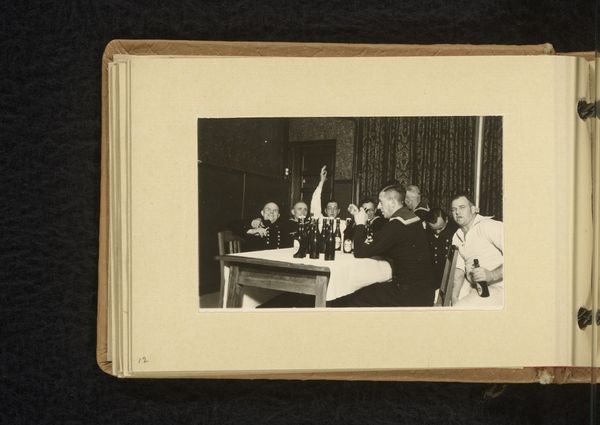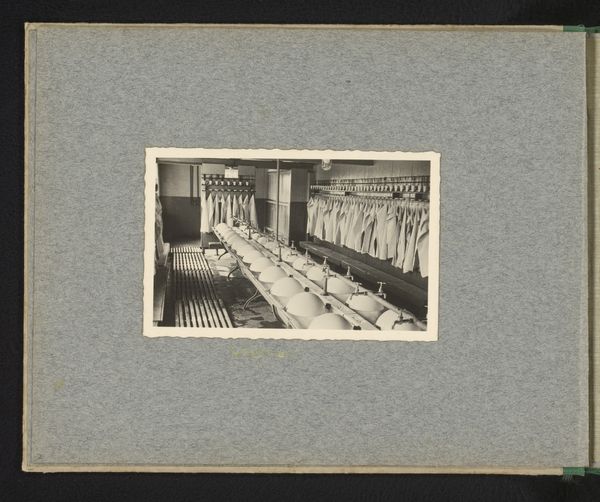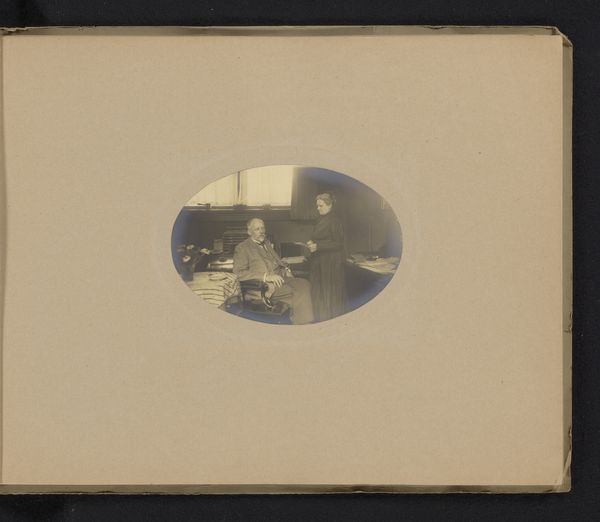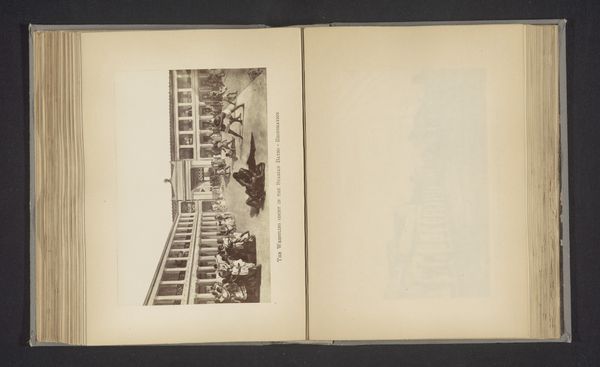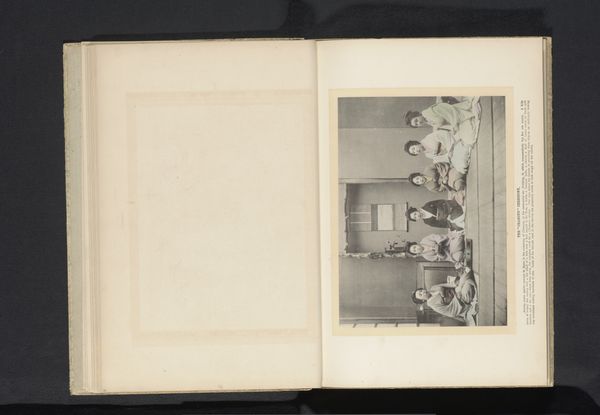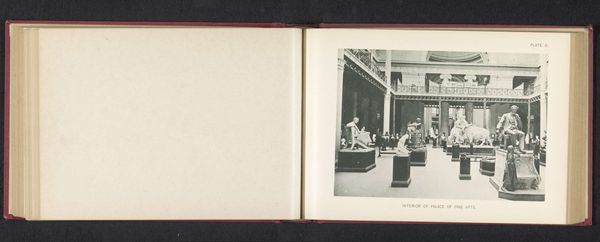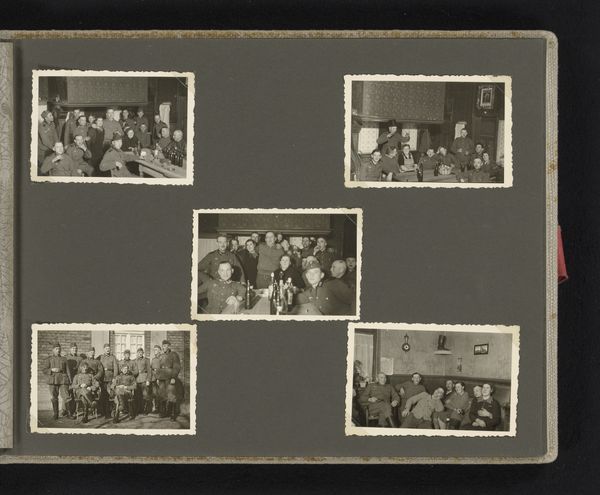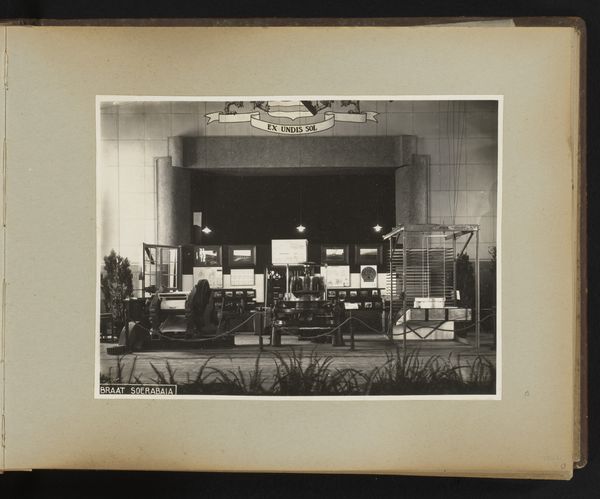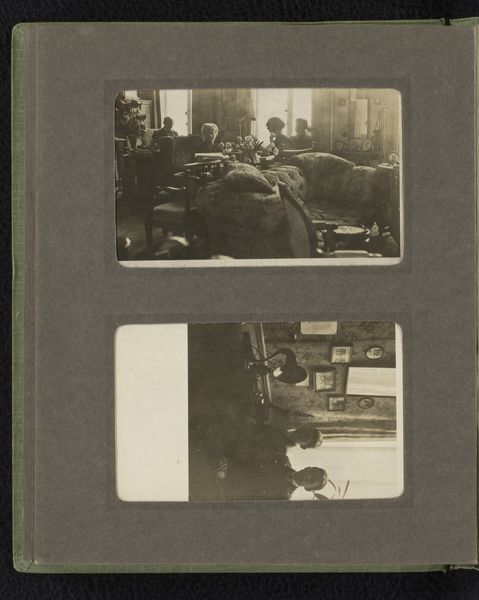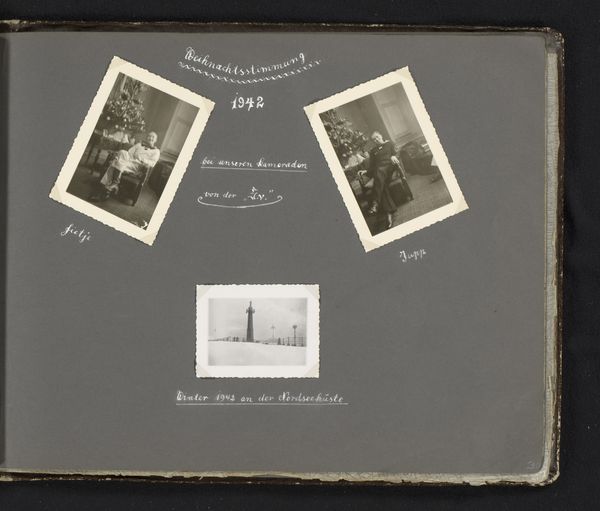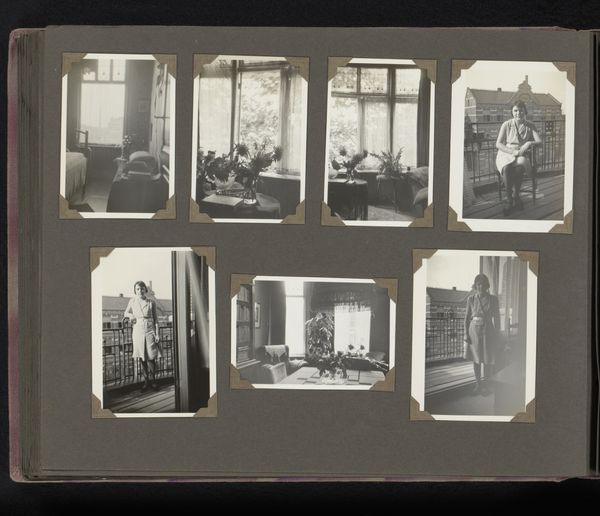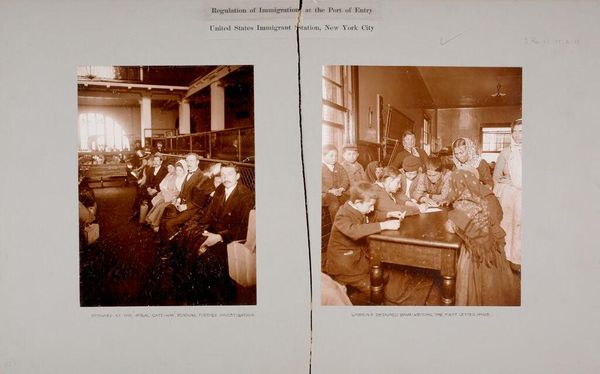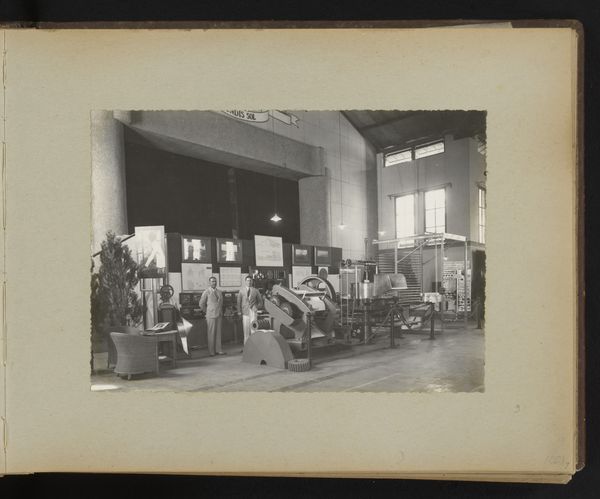
print, photography, gelatin-silver-print
# print
#
landscape
#
photography
#
group-portraits
#
gelatin-silver-print
#
genre-painting
#
realism
Dimensions: height 60 mm, width 90 mm, height 85 mm, width 120 mm
Copyright: Rijks Museum: Open Domain
Curator: Here we have an intriguing gelatin-silver print titled "Kerstmis," dating from 1940-1943, held here at the Rijksmuseum, attributed to an anonymous photographer. My immediate reaction is a certain unease despite what seems to be a celebration. The monochrome palette and blurry edges evoke a sense of uncertainty. What’s your first impression? Editor: It's claustrophobic, isn't it? The close quarters and dense arrangement of figures in this wartime Christmas gathering suggest forced proximity. The image, technically, is grainy, giving the entire scene a somber almost mournful quality, like a collective memory straining to surface. It's far from the cozy ideal of Christmas. Curator: Absolutely. The photograph captures a long table filled with uniformed young men—likely sailors, given the context of wartime and their attire—gathered in what looks like a mess hall or barracks, with a decorated Christmas tree in the background, as the centerpiece of hope and familiarity. Beyond the realistic, documentary aspect, though, what symbolic layers are you picking up? Editor: For me, the dominant symbol is the tree itself. Despite being festooned, it can’t mask the environment of strict uniformity, the absence of overt joy, and the weight of collective displacement and risk. Christmas trees often function as symbols of idealized home life and family gathering, however, it can signal the void the figures feel when so many are removed from those traditions. It is striking for its ability to reflect back all that's missing. It's like a poignant symbol, standing tall amidst a roomful of constrained individuals, an intersectional commentary on isolation and survival under duress. Curator: I can see that reading. Looking at the photograph more closely, it is really about the contrasts that the artist wants us to note. The artist used strong lines and linear arrangements throughout the shot, from the ceiling lights above the table to the bodies and facial lines that the subjects adopt. They really give us that sense of order and stability amidst all the chaos during World War 2. Do you have any final thought? Editor: It compels me to think critically about how narratives of celebration and tradition often serve to conceal more complicated socio-political realities. Curator: It is true and its lasting appeal comes from its capacity to resonate across time, encouraging us to interrogate the subtle dimensions of community and sacrifice, both past and present.
Comments
No comments
Be the first to comment and join the conversation on the ultimate creative platform.
